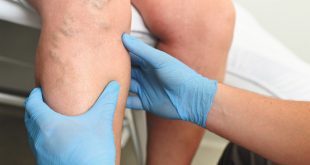Helpful tips for traveling after hip or knee surgery
Hip and knee replacements empower thousands of patients each year to resume active lifestyles. Each patient’s recovery is different, and some may return to daily activities, sporting activities and travel sooner than others. This varies based on the patient and the procedure. Travel can take a toll on anyway, so patients in the post-surgical recovery phase need to be especially careful.
Risks of traveling after hip or knee replacement
In general, patients should wait six weeks to travel. Six weeks after surgery is considered the immediate postoperative period and is the optimal time for complications, if any should arise. The main risks of traveling-whether by plane, train, or automobile-are associated with prolonged sitting, dehydration, and blood clots. When you are inactive or seated for extended periods of time, your body can have a difficult time reestablishing blood flow around your surgical site.
Why is blood flow an iss11e after hip or knee replacement?
When you are active, the muscles of the lower extremity pump blood in a rhythmic state of contraction and relaxation. When you are not active, such as during travel, blood may pool resulting in increased risk of DYT or blood clots. The blood clots can sometimes migrate to the lungs and lead to significant breathing problems and possibly death.
Mitigating risks of complications during travel
Helpful strategies for traveling after surgery
Only you know how your body is feeling and healing after surgery. If you don’t “feel up to it,” – don’t do it. Most airlines will reschedule due to a medical condition. However, if travel is absolutely necessary or if you are traveling between the six- and twelve-week mark, please review these tips for helping to keep you comfortable and safe during travel.
For any travel-plane, train, or automobile:
Don’t overexert yourself. Give your body time to heal. Stay well hydrated
Avoid alcohol
Take your time and use a cane or rely on your spouse/ partner/friend as support
Wear compression socks/hose to help with blood flow Walk/stretch every half hour to an hour in the aisle or on the road to avoid deep vein thrombosis (DYT)
Do ankle pumps while seated between walking in the aisle or stopping to walk while on the road
Use wheelchair services when available
Take medication just before boarding and/or long excursions
Avoid large crowds if possible
As a final note, always listen to your body (and your surgeon).
If you don’t feel comfortable traveling, then push it back a few weeks. Better to be safe than sorry.
IMPORTANT: Always consult with your surgeon about any travel plans before you have your surgery. They may impact your recovery and you may need to move the surgery in order to accommodate your travel plans. Your safety is the number one priority, so allows adhere to your surgeon’s orders. Each patient is different. There is no •one size fits all” plan for travel aer surgery. So, while you can get some idea of when you can travel or tips for traveling, your surgeon’s word should be final. This will help ensure the long-term success of your surgery and quality of life. This content is not intended to diagnose, treat, cure, or prevent any disease.
99% of patients walk out and go home 90 minutes after surgery, learn how:
(352) 973-4070
www.UNOVAHipAndKnee.com
 Central Florida Health and Wellness Magazine Health and Wellness Articles of the Villages
Central Florida Health and Wellness Magazine Health and Wellness Articles of the Villages



